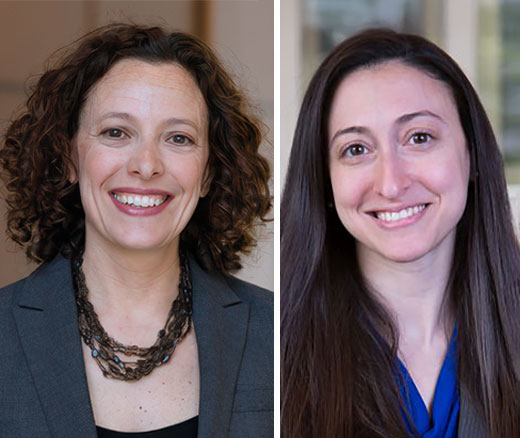
Penn LDI Raises $5.5 Million in Landmark Davis Family Gift Initiative
Includes $1 Million in Donations to Meet a Matching Challenge
News
The Trump administration’s sweeping cuts to violence-prevention programs nationwide are likely to reverse years of progress in reducing gun violence and may lead to a surge in shootings across cities, suburbs, and rural areas, according to two leading academic experts speaking at the University of Pennsylvania.
The scholars spoke during a June 6 virtual “Cuts to Violence Prevention Programs” seminar hosted by Penn’s Leonard Davis Institute of Health Economics (LDI) and the nonprofit health policy newsroom Tradeoffs. The session was part of the organizations’ “Decoding the Moment” series, which explores how new federal policies are reshaping health care.

In April 2025, the administration rescinded more than $800 million in Department of Justice (DOJ) grants earmarked for local gun-violence-prevention and crime-reduction efforts. The DOJ canceled 373 grants, affecting more than 550 organizations in 48 states. The largest share of the cuts targeted community violence-intervention programs—efforts that use evidence-based street outreach, hospital-based interventions, mentoring, restorative justice, and other social strategies to prevent shootings and homicides.
The funding was originally made available in 2022 under the Bipartisan Safer Communities Act and distributed through a DOJ Community Violence Intervention and Prevention Initiative. At the time, then–DOJ Principal Deputy Assistant Attorney General Amy L. Solomon said:
“For too long, we have undervalued the wealth of resources available through community organizations and those with lived experience. We know there’s a better way, one that builds on what we have learned about violence and its causes. If we hope to achieve sustainable reductions in violence, we must embrace our community assets as a central ingredient in violence-reduction strategies.”
In this April reversal, the current DOJ deputy assistant attorney general for the Office of Justice Programs said that community-violence-prevention programs “no longer align with administration priorities.”

The cuts come despite the latest statistics showing that 46,728 people — or 128 each day — were killed by firearms in 2023, according to the Centers for Disease Control and Prevention CDC).
“The timing of these funding cuts is horrible, and I don’t really see any valid rationale,” said seminar panelist Jeremy Biddle, MPA, director of Penn’s Violence Reduction Policy and Programs in the Criminology Department of the School of Arts & Sciences. “These are proven programs that are now stitched into the public-safety paradigm that a lot of communities have supported, and this just throws it into a tailspin.”
“There is no upside for this policy, not even a cost upside,” said the second panelist, Elinore Kaufman, MD, MSHP, emergency-surgery physician, LDI senior fellow, and medical director of the Penn Trauma Violence Recovery Program. “These are cost-effective programs.”
She pointed to Pew Research Center data and other sources confirming decreases in gun deaths, gun murders, gun injuries, and mass shootings from 2022 through 2024.

Kaufman recounted the story of a high-risk patient who was violently injured after being released from prison in Philadelphia—the immediate post-release period being a time of very high risk for violence.
“When I met him, I was skeptical that he would be receptive to our violence-recovery specialists,” Kaufman said. “But that’s part of the magic of our model. He was able to connect. We got him talking and listening and then to services. He reached out to his own family and friends who wanted to retaliate and talked them down, preventing more violence. He worked with our program to get connected to our employment partners.”
“It’s important to note that our service is not isolated; it is enmeshed with all the other services needed by people struggling with poverty and disenfranchisement,” Kaufman continued. “This man did get a job at Lincoln Financial Field, but it was outdoors in the winter, and he didn’t have a coat. We worked with another partner to get him one. Because of something as concrete as warm clothing, he had legitimate employment to satisfy his parole officer. This wraparound support can change the violence risk and life trajectory of an individual. That’s what the DOJ money was helping to do in these programs across the country.”
Moderator Dan Gorenstein, executive editor of Tradeoffs, asked both panelists to name examples of programs that successfully use evidence-based methods to lower gun violence. They cited five:
• ROCA: A Boston-based nonprofit that runs a four-year intervention model working intensively with 16- to 24-year-olds at acute risk of violence, many of whom have experienced significant trauma and distrust of traditional support systems. ROCA uses cognitive-behavioral methods and trauma-informed practices to teach life-saving skills and address root causes of violence.
• University of Chicago Crime Lab Gun Violence Section: A research center that applies rigorous data analysis, behavioral science, and partnerships with public agencies and community organizations to develop, test, and scale interventions.
• READI Chicago (Rapid Employment and Development Initiative): A community-based program targeting adult men at highest risk of involvement in shootings and homicides. It combines cognitive-behavioral interventions and persistent, relationship-based outreach with 18 months of subsidized, supported jobs in fields such as construction, landscaping, and warehousing.
• Health Alliance for Violence Intervention (HAVI): A Boston-based nonprofit that advances hospital-based programs linking victims to hospital and community resources. It offers safety planning, crisis intervention, mentoring, and long-term case management.
• University of California Davis Health Wraparound Program: A hospital-based intervention supporting young people ages 13 to 26 who have been injured in violence. The program provides mentoring, intensive individualized case management, and connections to resources for food, housing, transportation, and ongoing physical, mental, and emotional recovery.
“In programs like these, funding cuts translate into reductions of street outreach workers, reduction of personnel, and reduction of other high needs,” said Biddle. “One example is ROCA’s Baltimore operation. It lost $1 million as part of these cuts and that reduced their number of shooting protocol youth workers from 10 to 7, diminishing their referral capacity as a result. Their ability to serve high risk patients was reduced from 440 to 380 patients. The cuts are not going to cause them to close up shop, but it is forcing a contraction of their work that limits the reach of these life-saving programs.”
Kaufman explained that the 2022 infusion of DOJ funds provided the opportunity to scale small proven and previously underfunded community experiments. “It pushed some of these practices from pilots in unstable funding situations to organizations with real momentum. It facilitated the professionalization and development of the work and fostered the development of expertise and a sustainable workforce for this essential work.”
But now, Kaufman said the funding cuts are likely to lead to an increase in gun violence across the country as such services and supports are defunded and that a lot of researchers and emergency trauma teams “are dealing with a lot of anxiety now.”
“I think a lot of us in the field are feeling like we were part of a solution that was finally moving forward but now we’ve hit a wall,” she said.


Includes $1 Million in Donations to Meet a Matching Challenge

Government Regulatory Power Wanes as Power Accrues to Courts and Corporations

Temporary Shutdown Losses are Only the Beginning: New Rules Under the One Big Beautiful Bill Act will Shrink SNAP Benefits, and Worsen Food Insecurity for Millions Across the U.S.
Research Brief: Shorter Stays in Skilled Nursing Facilities and Less Home Health Didn’t Lead to Worse Outcomes, Pointing to Opportunities for Traditional Medicare

A New Call to Action Urges Three Ways State and Local Leaders Can Act To Ban Additives, Improve Food Labels, and Restrict Marketing to Children

New Therapies Inspire Hope, Even as Access and Treatment Risks Continue to Challenge Patients and Providers